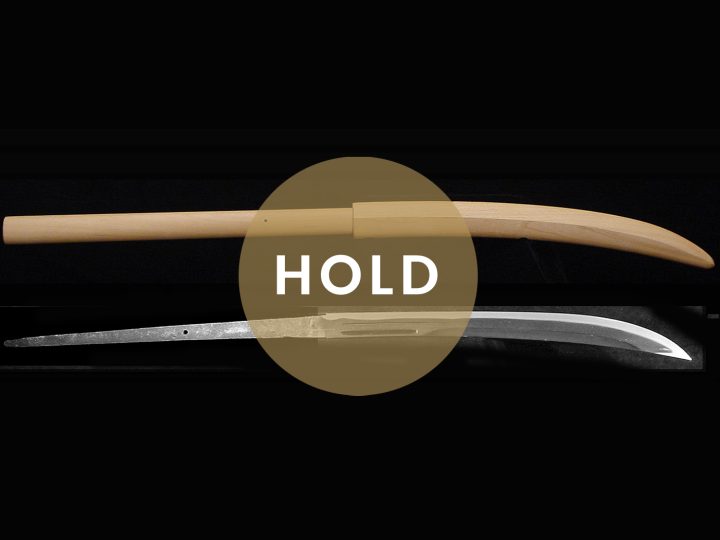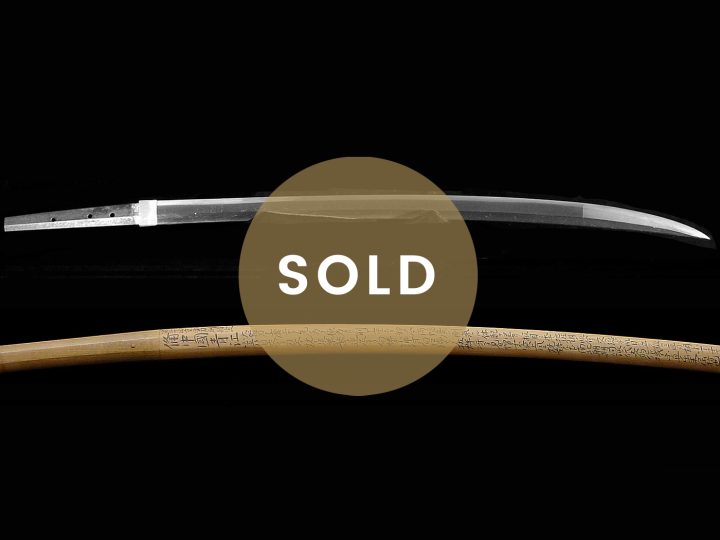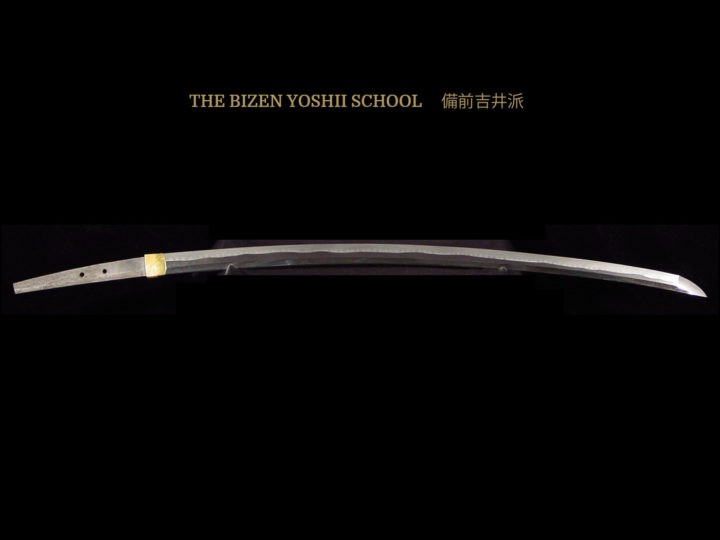
The Hôjôji School (法城寺) was founded in Tajima by the smith, Kunimitsu (国光), and flourished during the Nanbokuchô Era of the fourteenth and fifteenth centuries. Kunimitsu (国光) is considered by some to be one of the three famous students of Sôshû Sadamune (貞宗) though his working style differs significantly from that of Sadamune (貞宗). He worked in a combination of Bizen and Sôshû styles.
Tajima Province is one of the eight provinces along the San-in-dô that included Tanba, Tango, Tajima, Inaba, Hôki, Izumo, Iwami, and Oki. It was relatively close to Bizen, and this would account for the Bizen influence in the works of the Tajima smiths.
The Hôjôji (法城寺) smiths were famous for making naginata and nagamaki. I found reference to only one naginata that is in its original ubu shape. The texts refer to the fact that all tachi and almost all naginata and nagamaki have been shortened with signatures lost. Most of the naginata have been turned into naginata–naoshi katana or wakizashi and it is the same with the nagamaki.
The first generation Hôjôji Kunimitsu (法城寺 国光) worked around the mid fourteenth century. A second generation continued into the beginning of the Muromachi Era. From that time, not much is written about this school until the Edo Era when Masahiro (正弘) moved from Tajima to Edo and founded the Shintô Hôjôji (新刀 法城寺) School. The Shintô Hôjôji (新刀 法城寺) School resembles the Hôjôji (法城寺) School of Kunimitsu (国光) in name only. The workmanship style of the Shintô school seems to suggest that they have some connection with the Kotetsu (虎徹) school.
The major characteristics of the Nanbokuchô period smiths were as follows:
SUGATA: TACHI: Tachi are usually shinogi-zukuri with a high shinogi. They will have a shallow torii-zori without much difference in width from the machi to the yokote. The kissaki will be long and the fukura will lack roundness. As stated above, this school was most famous for its production of splendid naginata and nagamaki. Almost all of these have lost their original shape due to shortening and conversion into katana and wakizashi. When this is done, they are made into a majestic katana shape and there are some pieces that have been re-made to have an ô-kissaki.
TANTÔ: Among tantô, there are some that are of ordinary size for the period with uchi-zori, and there are some that are of a wide mihaba.
JITETSU: The hada will tend to be mokume hada with a mixture of o-hada. Usually there will be some masame hada mixed in. The ô-hada will produce chikei and this was referred to as aoji masso in the old days and was considered to be an important kantei point for Hôjôji blades.
HAMON: A mixture of chôji-midare and gunome-midare with ko-nie and an abundance of sunagashi. The overall feeling will be a combination of Bizen and Sôshû traits. The chôji of Kunimitsu is often referred to as chabana-chôji (tea-flower chôji). This will be different than the kawazuko (tadpole) chôji of Mitsutada in that the chôji in the chabana style will be clustered together in groups of two with rounded heads. The ô-chôji when found more closely resembles that of the Fukuoka Ichimonji School but will be done in nie deki instead of nioi deki. There will be long ashi, long kinsuji, and sunagashi. In zaimei (signed) tantô, there is a mixture of suguha, notare, ko-gunome, and gunome-midare.
BÔSHI: In katana that are naginata or nagamaki–naoshi, because the mune has been ground away, yakizume is the most common. In tantô, there are pieces with a long kaeri. It is only natural to presume that when the long swords were in their original state they were likely to have had kaeri also.
HORIMONO: Many of the naginata-naoshi blades retain their original naginata hi.
NAKAGO: As noted, practically all works are ô-suriage mumei with the original nakago being lost. Tantô are kurijiribari (the sides of the nakago are not tapered).
MEI: SHÔDAI:
TANSHÛ JÛ KUNIMITSU (seen around the Jôwa Era 1345-1350) 但州住国光
NIDAI:
TANSHÛ JÛ HÔJÔJI HAYATO NO SUKE KUNIMITSU (around Ôei Era 1394-1428) 但州住法城寺隼人助国光
The blade shown above is a Jûyô Tôken naginata naoshi attributed to the Hôjôji school. The following is a translation of the Jûyô Tôken zufu describing this sword:
Designated Jûyô Tôken at the 12th Shinsa of 30 June, 1965.
Katana
Unsigned: Den Hôjôji [法城寺]
Measurements: Length: 2 Shaku, 1 Sun, 5 Rin; Curvature: just under 4 Bu; Width at the base: 9 Bu, 2 Rin; Width at the point: 6 Bu, 6 Rin; Kissaki length: 1 Sun, 5 Rin; Nakago length: 6 Sun; Nakago curvature: none.
Construction: This is a shinogi-zukuri tachi with an iori-mune. There is shallow curvature, and the chû-kissaki is long. The kitae is itame with a flowing feeling and prominent hada. The hamon is ko-notare mixed with ko-chôji and gunome. There is ko-ashi and yô activity. There are repeated streaks of sunagashi, and the nioiguchi is vivid. The bôshi is midare-komi with a kaen style tip. The nakago is ô-suriage, and the end of the nakago is kurijiri in style. The yasuri are kattesagari, and there are two mekugi-ana. The blade is unsigned.
Description: The Hôjôji School resided in Hôjôji, Tajima Province, and only the name of Kunimitsu [国光] is well-known. From long ago they were highly famed as the expert makers of naginata. There is one opinion that Kunimitsu was one of the three disciples of Sôshû Sadamune [貞宗]; however, this seems unlikely. In the Meikan, a work is listed with a Jôji era (1362-1368) date; there is a second generation Hayatonosuke Kunimitsu [隼人助国光] listed, and an oshigata with an Ôei (1394-1428) date has been seen. Signed extant works are almost exclusively tantô with a suguha or ko-midare style of workmanship. The naginata are almost all flamboyant works with nie based hamon that are essentially chôji-midare, but which differ from Bizen works.
This katana is ô-suriage and mumei. It has a chôji style midare-ba, and repeated kinsuji and streaks of sunagashi can be seen. In comparison to those ô-suriage Hôjôji attributed blades that are typically seen, this blade has superb workmanship, or, in other words, the style of workmanship is closely associated with the Sôden. The question as to whether the katana that was produced from reforming an ô-suriage naginata (naginata-naoshi), and that is signed Tanshû jû Kunimitsu [但州住国光] is by this same smith or not is something that remains to be studied further.





